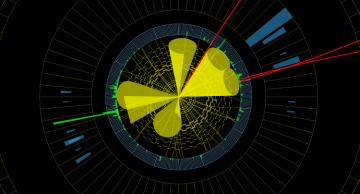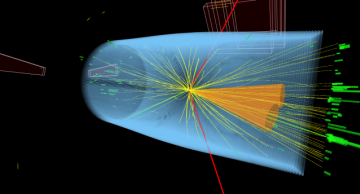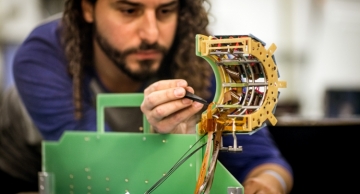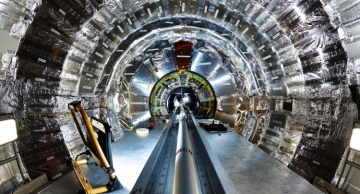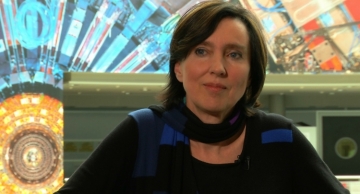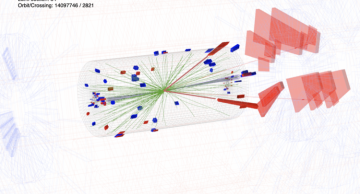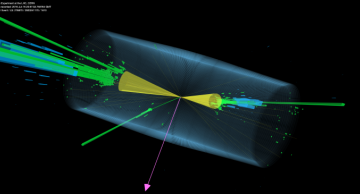What does the decay of a bottom quark look like?
Fragmentation, also known as hadronization, is when particles that contain quarks or gluons create other particles via the strong interaction. The fragmentation process cannot be exactly…
News
|
fblekman |
Physics
A shot in the dark: Can jets recoil against Dark Matter?
In their 2020 hit single ‘A Shot in the Dark’ the rock band AC/DC got it right in many ways:
“A shot in the dark
Make you feel alright
A shot in the dark
All through the…
|
fblekman |
Physics
Using machine learning to improve the detection of new physics in the interactions of the top quark
Although our theory describing the interactions between fundamental particles is exceptionally successful, it has weaknesses. You may have…
|
fblekman |
Physics
Quarks are elementary particles in the Standard Model and the building blocks of the protons and neutrons in atoms. The dominant force between quarks is the strong interaction. Gluons are the force carriers of the strong interaction, and one thing…
|
losmith |
Collaboration
At a virtual ceremony, held on the 21st of May 2021, the European Academy of Sciences presented its 2020 Blaise Pascal Medal for Physics to our former Spokesperson Tejinder Virdee. At the ceremony Tejinder gave a talk about the significance of the…
|
losmith |
Collaboration
Professor Geoff Hall from Imperial London College has been elected for the prestigious fellowship granted by the Royal Society. Fellows and Foreign Members are elected for life through a peer review process on the basis of excellence in science.…
|
fblekman |
Physics
In the LHC, groups of 100 billion protons collide 25 million times every second. But most of these protons miss, so each time we point the protons at each other doesn't give us 100 million proton-proton collisions. In fact, collisions are much…
|
losmith |
Detector
Reaching another major milestone of the Long shutdown 2 and performing the biggest upgrade of the experimental beam vacuum system since the first operation of CMS in 2008. After several years of complex design, manufacture and planning, the CMS…
|
fbaldass |
Collaboration
The CMS Collaboration Board has elected Dr. Claudia-Elisabeth Wulz as the next CMS Collaboration Board Chair following Prof. Harrison Prosper’s mandate which ends on the 31st of August 2021.
The Collaboration Board is the governing body…
|
fblekman |
Physics
The CMS collaboration has submitted a paper with a new, precise analysis of the data enriched in the Higgs boson decays to four leptons. Simultaneous measurement of the Higgs boson production and decay was essential in this analysis.
The…
|
fblekman |
Physics
Experimental evidence from the last half-century has established the standard model as a foundational theory of particle physics. Still, it is clear that the standard model is not the final theory. There are many open questions: Is the mass of Higgs…
|
fblekman |
Physics
The Standard Model of the fundamental particles describes the W and Z bosons as the mediator particles of the weak force, one of the four known fundamental forces responsible for the phenomenon of radioactivity and an essential ingredient to our Sun…

